What’s your go-to drink order on an airplane? I usually get a ginger ale with ice, but if it’s a morning flight I’ll treat myself to an orange juice. Something about orange juice just feels like waking up. Sweet, cold sunshine-colored refreshment.
The first time I had orange juice with pulp, I took one sip and thought to myself, “what the hell is this?” because I didn’t know what pulp was yet, so I spewed it out like a dramatic TV spit take all over my grandparents’ wooden dining table. I’ve never really liked pulp much since.
Have you ever ordered Pepsi on a flight? I’m gonna be honest, it has literally never occurred to me that ordering Pepsi would be an option. I’ve heard people order Coke plenty of times before, but if I heard someone ask for a Pepsi on an airplane, I think I’d whip my head towards them in shock and horror with the same level of intensity as if they’d just said, “I have a bomb in my luggage.”
In the course of writing and researching for this piece, I’ve come to view Pepsi with such a high degree of confusion and concern that I’m having a hard time taking them seriously as a brand. At this point, “Director of Marketing for Pepsi” sounds about as impressive to me as when a 16-year-old who does a lot of chores puts “Domestic Engineer” on their half-page resume for a summer landscaping job.
Folks, that Kendall Jenner cop commercial was just the tip of the iceberg. By the end of this piece, you’re gonna have so little respect for Pepsi as an American institution. Get ready to have a new least favorite soda.
BREAKING THE SODA BARRIER
What comes to mind when you think of the Concorde?
Is it the supersonic speeds? The opulent luxury? The thunderous sonic boom? The iconic droop snoot?
What about Pepsi?
The plane best known for its (literally) groundbreaking speed does not often bring to mind the bubbly brown beverage originally known as “Brad’s Drink.” But thanks to a soda company with way more money than it knew what to do with, Concorde ended up as the centerpiece of one of the most ambitious advertising stunts in recent memory.
The year was 1996. The top minds at Pepsi were just starting to figure out that their archrivals at Coca-Cola had a monopoly on the color red. Back in those days, Pepsi cans had a lot of red on them, so this was a big problem as Pepsi was trying to set itself apart.
And since so much of consumer choice is dictated by specific associations of pretty colors jumping out at you from the shelves (source: me whenever I buy snacks because of the fun colors on the box), Pepsi decided it was time to change things up.
“Red,” Pepsi said, “your time is up. We’re gonna use a new color to sell soda now.”
And you know what color isn’t red? Blue.
Pepsi said “dibs on blue” to the entire world of soda, and just in case the rest of the sodas didn’t get Pepsi’s fax or page or carrier pigeon or whatever they used to communicate back in the 1990s, Pepsi spent half a billion dollars announcing to the whole world that their soda cans were blue now.
“We’re all in on blue,” Pepsi said, and what better way to reinforce that idea in the minds of consumers than to paint the only commercially successful supersonic airliner with a ton of blue paint and the word “Pepsi” in size 100,000 font?
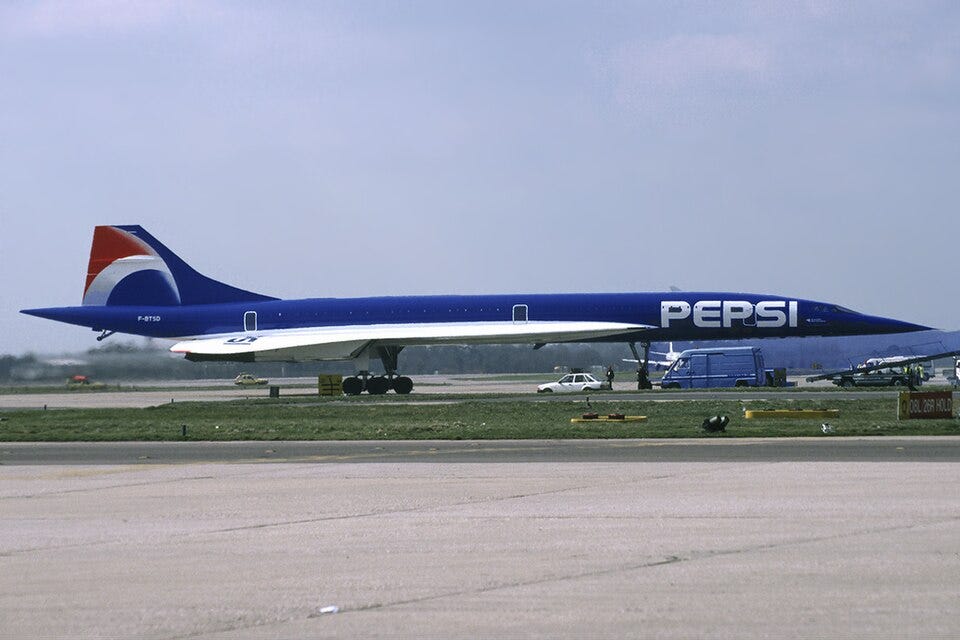
This wasn’t the first time Pepsi had used a plane for promotional purposes, but it would certainly be among the most memorable. Project Blue was now underway, and it was already running into its first hurdle as the folks at Pepsi were learning that there was actually a very specific reason Concorde was painted a very specific shade of white.
“Anti-flash white,” as it’s known, helped Concorde counteract overheating and is the same paint they use on nuclear bombers to reflect thermal radiation created by atomic bombs.
When Concorde flew at 60,000 feet (~18,000m), its skin could get as hot as 260°F (126°C) from kinetic heating, despite the outside air temperature being a frigid -67°F (-55°C). Passenger windows were hot to the touch and the fuselage slowly expanded by up to a foot.
(If you want to learn more about the Concorde, I previously covered it in a stupid amount of detail, so feel free to check that out.)
So, this is all to say – Concorde needed the white paint to protect it from heat. How would they manage with Pepsi blue?
Air France told Pepsi that if they tried to fly Concorde as normal with the Pepsi blue paint job, the paint would melt and/or burst into flames before long, as dark colors build and hold heat better than light ones. “Ok, so let’s maybe not do that,” said Pepsi, I assume.
To stop the Pepsi Concorde from catching fire 11 miles above the Earth, they kept the wings white and they followed strict speed restrictions that would keep the heat at a manageable level. With the Pepsi paint job, Concorde was only allowed to fly at its normal cruising speed of Mach 2.02 for a maximum of 20 minutes at a time, but it could fly freely at Mach 1.7 and below with no limits. Presumably they would have had fewer issues with a Crystal Pepsi paint job.

Concorde’s Pepsi makeover required 200 liters of paint (53 gallons) and 2,000 hours of work. Once the job was finished, the plane was covered in brown wrapping paper until it was time to secretly transport it in the middle of the night from Toulouse to London Gatwick Airport. After its clandestine midnight flight, the Pepsi Concorde was unveiled at an event featuring dramatic spotlights, Cindy Crawford, and altogether too many fog machines.
Newly unveiled, the Pepsi Concorde went on a two-week promotional tour to ten cities around Europe and the Middle East, and then the world promptly forgot the whole thing had ever happened.
I love the Pepsi Concorde because it all just seems like a big joke to me. If I went to the airport in 1996 and saw the Pepsi Concorde sitting on the tarmac, I would just assume I was on a prank show. I would be like, “I didn’t know they were still making Candid Camera, am I gonna have to sign an appearance release?”
We now arrive at the all-important question that also conveniently segues us into the next section of this post is, “How many Pepsi Points do we think the Concorde would have cost?” Because, as you may already be aware, this was not the only high-profile run-in that Pepsi had with the aviation community.
OVERPROMISING AND UNDERDELIVERING IN THE HEAVENS ABOVE — “THE PEPSI WAY”
That same year, Pepsi ran an ad that seemed to promise its most dedicated soda drinkers a fighter jet in exchange for 7,000,000 Pepsi Points. One 21-year-old took this ad at face value but was rebuffed by Pepsi, resulting in one of the greatest court cases of all time.
This whole saga has been covered in much greater detail elsewhere, including in the Netflix documentary “Pepsi, Where’s My Jet?” so I won’t get into it too much, apart from sharing this very funny snippet from the Wikipedia page of the court case:
Even the fighter jet, though, was not Pepsi’s first interaction with the aerospace industry – that came 11 years earlier when Pepsi managed to get their soda to space.
The year was 1985 and an experimental soda can built by Coca-Cola was about to ride aboard the Space Shuttle Challenger. They had spent $250,000 creating an innovative design that could function in microgravity and they were ready to celebrate the impressive achievement of “first soda in space.”
But then along came Pepsi, pleading with NASA, “wait wait wait wait wait can we come too? please?” And NASA, taking pity on the understudy of sodas, let Pepsi come to space too.
Their first order of business was creating a soda can that would work in space, so the visionaries at Pepsi took one look at Coke’s very impressive and inexpensive space can, lit $14 million on fire, and slapped a Pepsi sticker on a can of shaving cream.
Now, you might be thinking, “Hey, they didn’t actually repurpose a literal can of shaving cream for space soda purposes, right? That was just a joke about how it looks like a can of shaving cream, right?”
I’ll let astronaut Loren Acton explain:
“...the Coke can had had a lot of work put into it …. The Pepsi can, when it showed up, looked like a shaving cream can. In fact, the Pepsi logo was just stuck on a paper wrapper, and when we peeled it off, indeed it was just a shaving cream can. It still had the shaving cream logo on it.”
Grade-A freeloader Pepsi got to share the honor of “first soda in space” with its much more deserving rival (although Coke was the first to be consumed). The astronauts, already annoyed they had to waste so much time drinking soda instead of doing important science, happily let the world know that the soda didn’t even taste that good in space anyway. The Space Shuttle (shockingly) lacked an onboard mini fridge, so the soda was nice and warm, and the microgravity made it all fizzy. The astronauts said they preferred Tang.
Pepsi proceeded to celebrate the achievement as “one giant sip for mankind,” which I’m sure the marketing department was all too pleased with themselves for coming up with.
Anyway, here’s a quick breakdown of American progress in space exploration:
Would you believe this wasn’t the only stupid thing Pepsi did in space? By this point I’m expecting your answer will be “yes, actually, I would believe that very easily,” and your instinct would be correct.
FURTHER TARNISHING THE COSMOS
As it turns out, 1996 was a very eventful year for Pepsi, because the Pepsi Concorde, the Pepsi Points fighter jet debacle, and this next stupid thing all happened that year. It was a busy time for Pepsi’s C-suite and the one brain cell they all shared amongst themselves.
Pepsi, now hellbent on doing impressive stuff in space and probably a little miffed they didn’t get to be the first soda consumed in orbit, decided they wanted to have the title of “first commercial shot in space” all to themselves.
Pepsi got Russia on the phone and said, “We heard you guys just started doing capitalism, wanna make a soda commercial?” and Russia said “это было бы на самом деле потрясающе, да, пожалуйста.” (Translation: “that would actually be awesome, yes please.”)
So, Russia used Pepsi’s money to make a four-foot-tall aluminum and nylon replica of a Pepsi can, and they brought it to the Mir space station. Once onboard, they took it out for a spacewalk and filmed the Pepsi commercial, “reputed to be the most expensive ever made,” according to The Irish Times.
But guess what? Here comes the stupid part. Despite spending millions of dollars and a truly unreasonable amount of humanity’s collective resources making this ad, Pepsi never aired it. I’m having trouble finding a concrete source on this, but the reason I keep seeing tossed around is that Pepsi changed the design of their can before the commercial ever had a chance to air, so the giant space can would have looked different from the real cans they were trying to sell back on Earth.
Again, that’s not 100% confirmed, but what is 100% confirmed is that Pepsi once again blew millions of dollars on a frivolous project in space, and the only thing they have to show for it is the above video from this press kit posted by YouTube user BEEFJERKYdotCOM (and if you, like me, were wondering why the channel is called that, please see here).
Now, fast forward to the present day – do you think Pepsi has learned its lesson about trying to do bad commercials in space? No, haha, of course not.
Have you ever heard of a space billboard? Pepsi has, and in 2019, Pepsi wanted to make a space billboard promoting a Russian energy drink with a "campaign against stereotypes and unjustified prejudices against gamers." I’m so sorry but I am not making this up.
The billboard would have been composed of “a cluster of small satellites flying in formation, like migratory birds that want to sell you something,” as The Atlantic wonderfully put it. “In the early morning and evening, little sails on the satellites, made of reflective Mylar, would catch the light of the sun and become visible to the ground.”
Once the general public got wind of this abomination of the cosmos, they understandably got very pissed and said “do not under any cirucmstances do that” and then Pepsi tried to gaslight everyone into thinking they never planned on doing a space billboard in the first place.
Doesn’t this look awesome? Wouldn’t you love it so much if you got to see this instead of stars?
Here’s an artist's mockup of what the space billboard would have looked like from Earth:
Believe it or not, Pepsi has been in the “ruining your view of the sky” business for a long time. In the 1930s and 1940s, they owned or contracted 14 aircraft – used for what, you ask? Skywriting, of course! Pepsi became one of the longest-running contractors of skywriting services, commissioning over 2,000 sky-written messages in 1940 alone, blemishing the skies above all 48 U.S. states at the time, as well as Mexico, Canada, and Cuba.
NOT A GREAT MIXER
Suffice it to say, Pepsi has long had a strange and complicated relationship with the great blue yonder, and I’m pleased to report that Pepsi’s perplexing practices have persisted into the 2020s.
In 2023, Pepsi debuted the least-asked-for collaboration of all time, announcing an exclusive partnership with JetBlue to make them the only airline serving Pepsi Zero Sugar onboard.
This came a few years after JetBlue announced it would exclusively serve Pepsi products onboard, a decision that was met with a collective groan across the entire airline industry. One article described it as “a major downgrade,” arguing Pepsi needed to “stop treating its customers like an afterthought” and that “a change at the top wouldn’t be surprising” after a move that was “borderline self-sabotage.” Yikes. People really hate Pepsi, it turns out.
For their part, JetBlue claimed its customers had been asking for Pepsi on board, but I wonder if they were just thinking of that one very drunk Spanish woman whose “hands had turned into claws” after being denied Pepsi on a TAP Portugal flight.
I want to conclude this chronicle by sharing a personal story about the worst Pepsi experience I’ve ever had in my entire life.
When I was in high school, I worked as a dishwasher at a local restaurant. Among my various duties, I had to periodically go down into the basement to collect and dispose of empty cardboard boxes left lying around from food and drink deliveries.
One day, I was down in the basement and I noticed a few crates of liquor just sitting around, not locked up or anything. And to be honest, I was never much of a drinker in high school. The most I dabbled was usually warm cans of Budweiser in the library parking lot or reluctant swigs of Fireball with root beer chasers at bonfires. You know, normal high school stuff.
But as a misbehaved juvenile, stealing a bottle of liquor from my work just seemed like the natural thing to do. It just made a lot of sense for my character. I was a teenager, those were some loose bottles of unguarded liquor – it was only a matter of time before one ended up in my possession.
The normal way that I would bring these empty boxes upstairs and outside to the recycling bin was in their not-yet-broken-down form – that is to say, it was not unusual at all for people to see me walking through the kitchen with an armful of boxes that could conceivably be holding other items.
So, I thought, “This is the perfect opportunity to smuggle out a bottle of liquor undetected.”
One day, I tossed a bottle of liquor into a box and confidently headed upstairs, striding towards the back door. But right before I could make my exit, the head chef came up to me and said he wanted to talk for a second.
And the whole time we were talking, I was just standing there with a clearly stolen bottle of liquor, completely exposed, just sitting there in the box waiting to be spotted. At any point, if the chef had tilted his head down even a little bit, I would have certainly been busted.
But miraculously, he remained oblivious to my act of alcoholic thievery and I continued outside, stashing the bottle in a nearby bush before scurrying back inside like the crusty, mischievous boy I was.
Later, I got off work and grabbed the bottle from its hiding spot, and I put it in the trunk of my car before heading home.
A few days passed before I found myself home alone, and I seized upon the opportunity, thinking to myself, “ok I guess it’s time to drink my stolen alcohol now.”
So, I retrieved the bottle (I had left it in my hot trunk the entire time) and brought it into my garage. This was actually the first time I had thought to look at what type of alcohol it was, and I’m sorry to say it was probably the worst thing I could have possibly grabbed – Butterscotch Schnapps.
Ignorant to the horrors about to befall me, I cracked open the Butterscotch Schnapps, but right before I took a drink, I realized I should find something to mix it with.
Surveying the options available to me, I somehow settled upon Cherry Pepsi. I’m genuinely unsure if I just had no other options or if I deliberately chose this, but I grabbed a 20 oz. bottle of lukewarm Cherry Pepsi and began the slow, oblivious march towards my grave.
One devastatingly generous swig of Butterscotch Schnapps and a desperate, delirious chug of Cherry Pepsi later, I threw in the towel and grimly reflected upon my mistake.
After a brief, futile attempt at making sense of the decisions that had led me to that point in life, I threw the bottle into the garbage happily passed the bottle along to a friend who had much lower standards and much worse alcohol problems.
Anyway, that’s my Pepsi story. Feel free to share yours, however distressing or joyful, aviation-related or not, in the comments below. Thanks for reading!
If you enjoyed this piece, consider tossing me a few bucks (I will spend it on snacks)


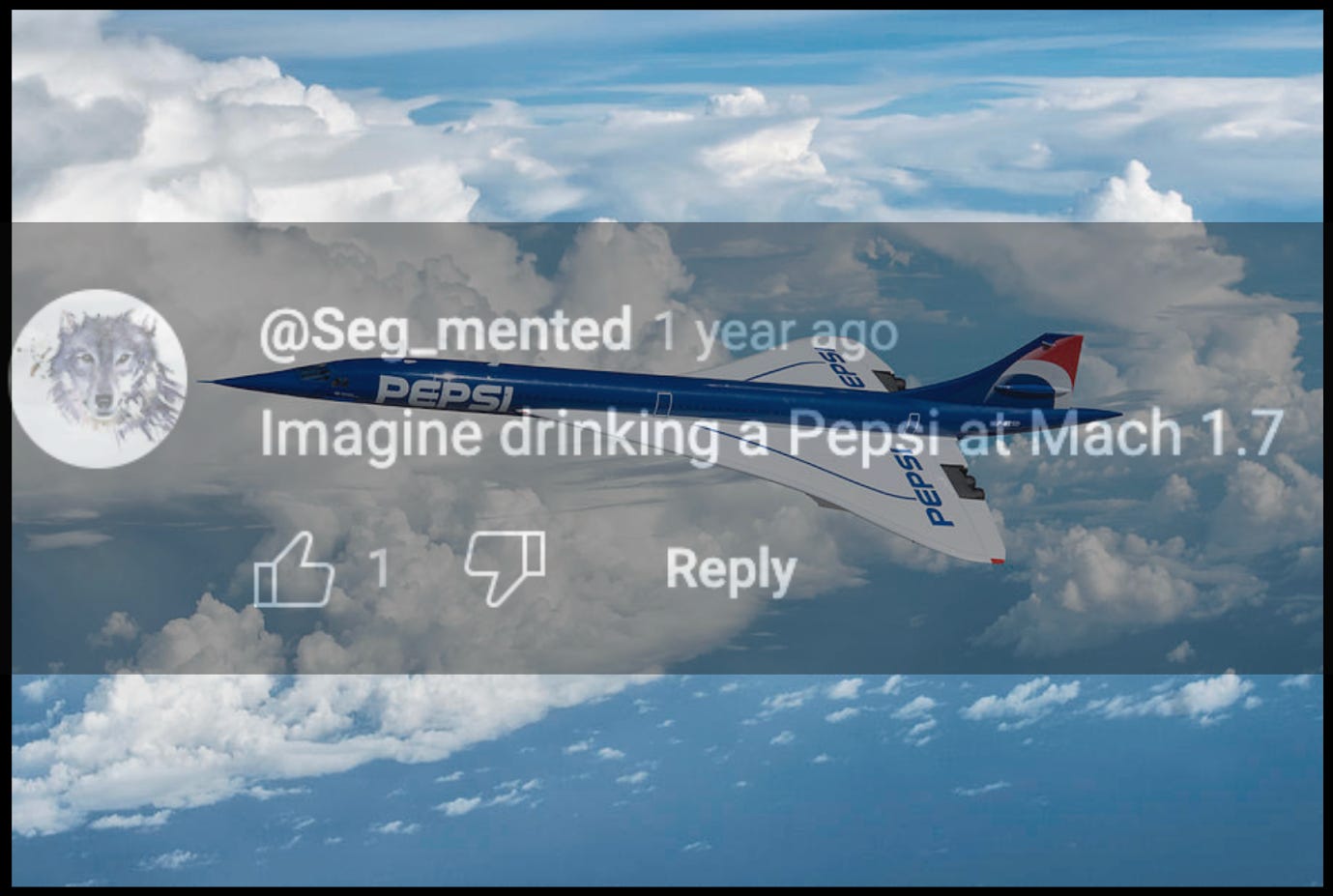

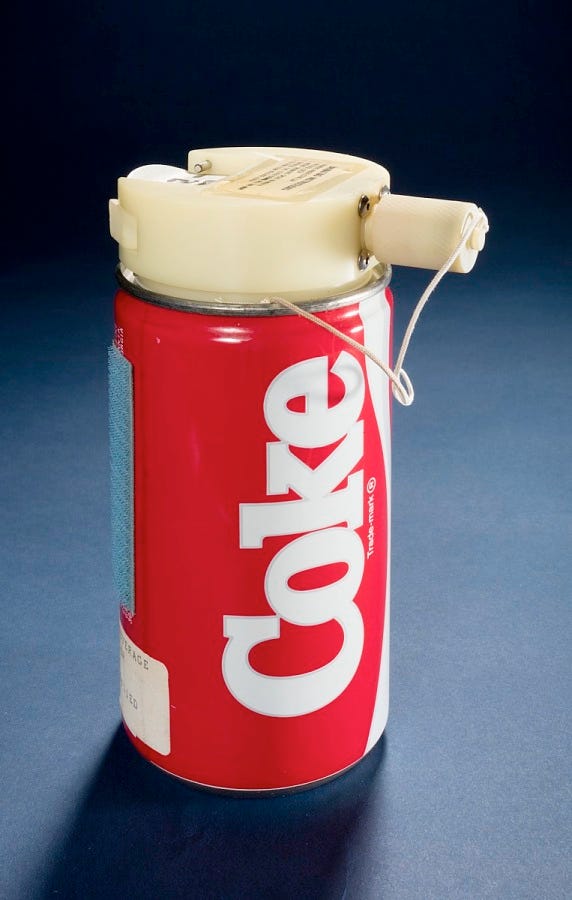
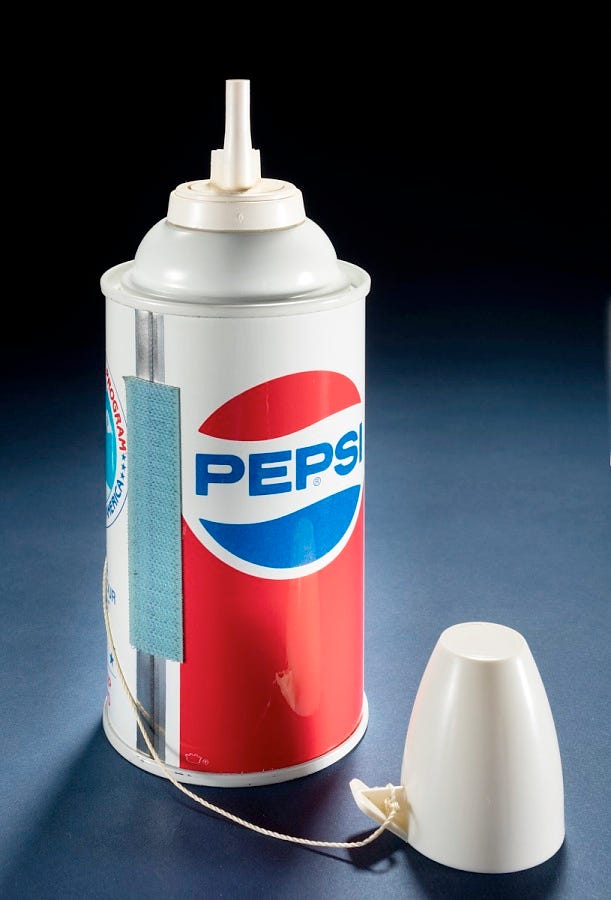
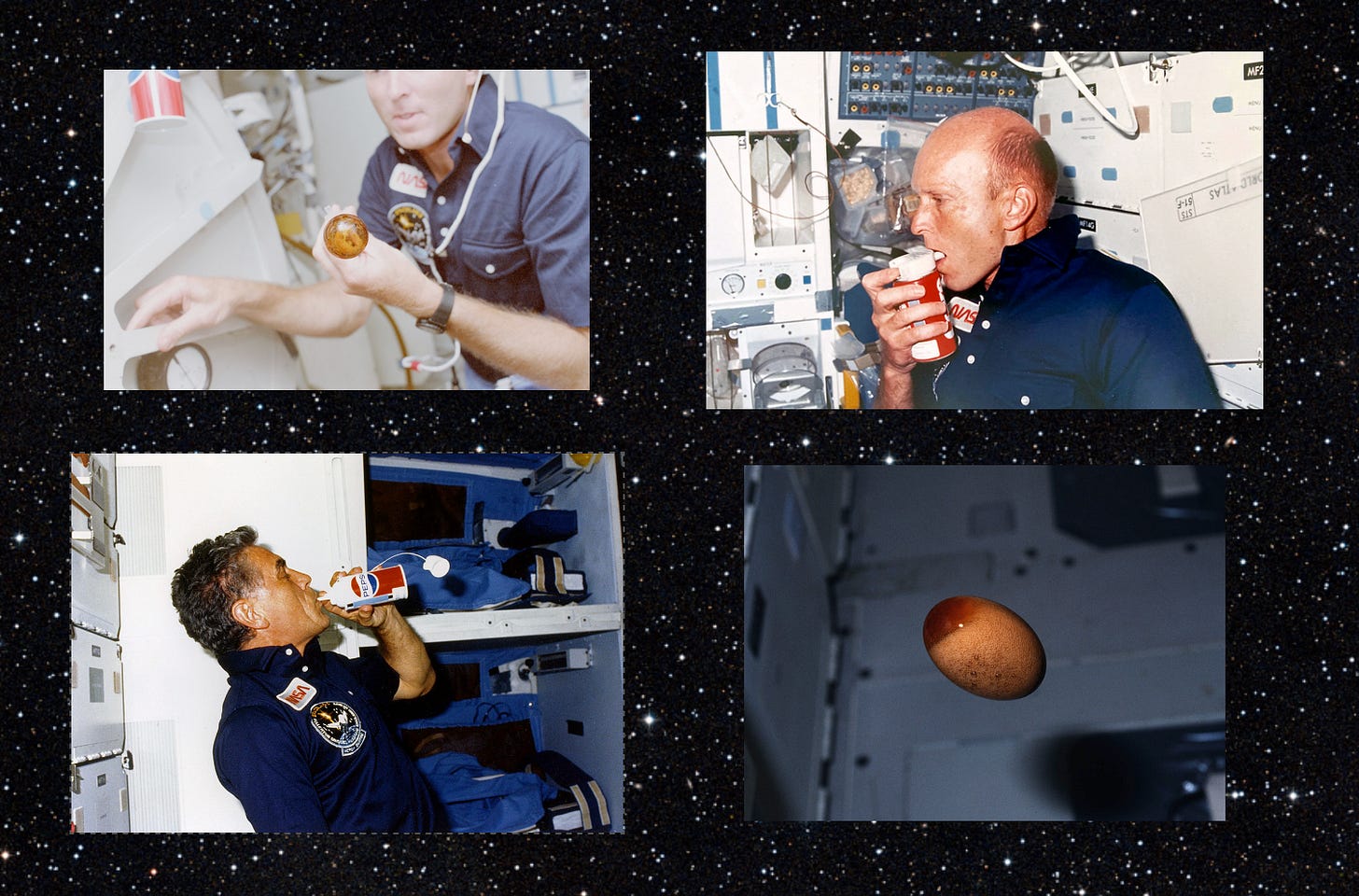
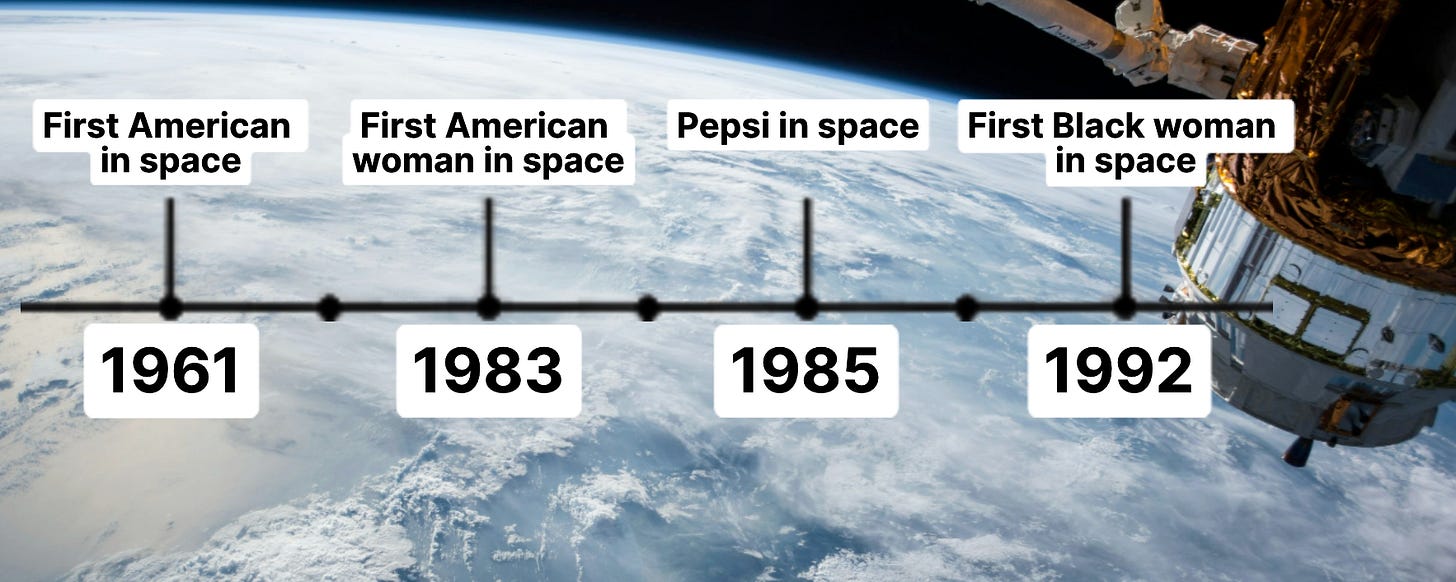
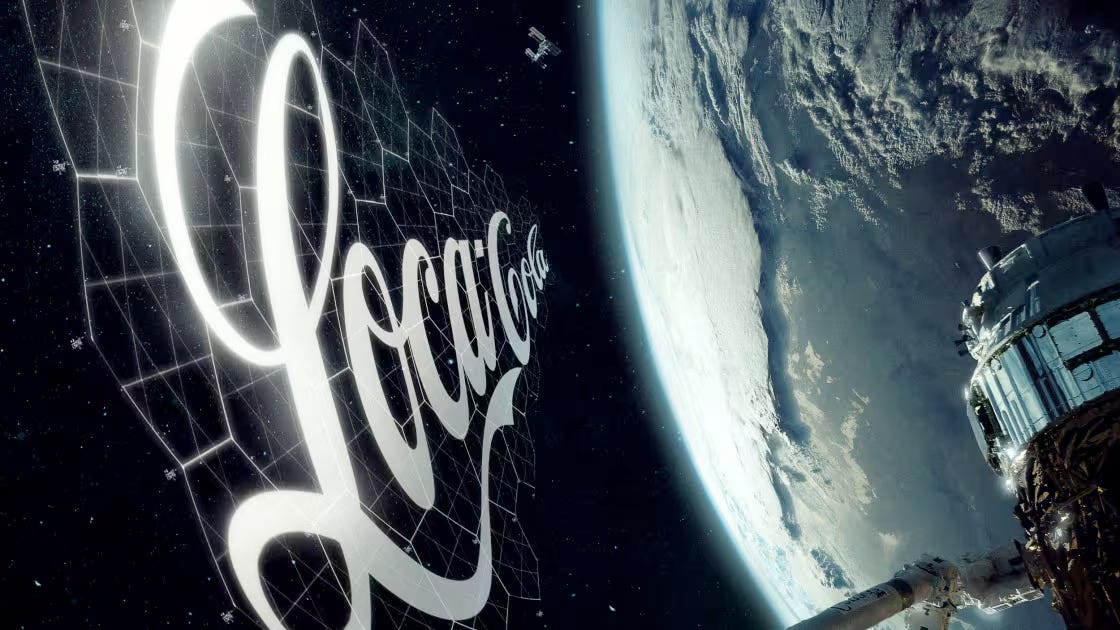
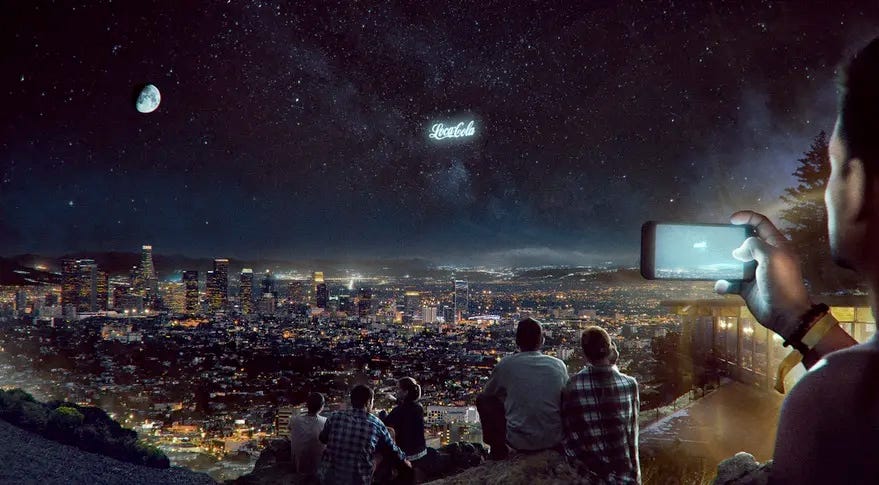

the great butterschnapps heist of '87
That was fun. I'm not a cola drinker and never understood the passion people had for Coke, Pepsi, or even RC Cola. They all taste the same to me. Enlighten me. If you can.